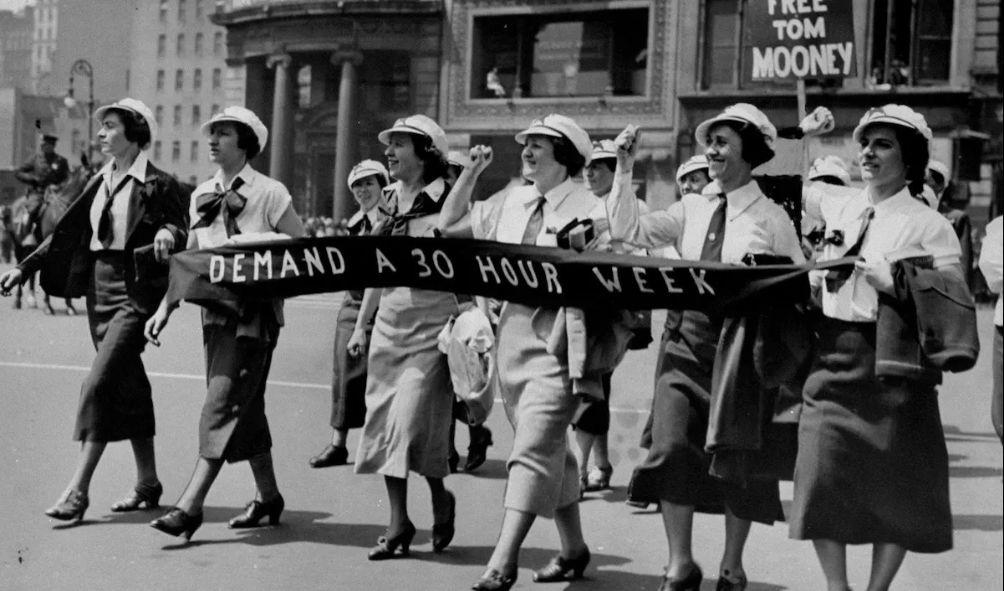From 8-Hour Workday to May Day: The Origins of Labour Day
Every year on May 1st, streets around the world burst into vibrant displays of color, echoing chants for fair wages and dignified working conditions.
This is Labour Day, also known as May Day, a time when workers unite to celebrate their achievements and rally for future victories.
Originating from the American labor union movement’s fight for an eight-hour workday, Labour Day has evolved into a global event that not only commemorates the historic struggles of workers but also highlights contemporary challenges within the workforce.
As we witness parades and listen to speeches, it’s crucial to reflect on the ongoing issues that plague workers and explore solutions that countries, especially within Africa, are implementing to improve labor conditions.
The history of Labour Day and its significance as May Day
The Haymarket Affair, which occurred in 1886, was a pivotal event in the history of labor movements in the United States and had a profound impact on labor rights across the world.
It took place during a period of intense labor conflict, where workers were increasingly demanding better working conditions, shorter hours, and fair pay.
On May 1, 1886, labor unions organized a nationwide strike advocating for an eight-hour workday, a cause that gained massive support, drawing thousands of workers into the streets across the country.
On May 4, a rally was held at Haymarket Square in Chicago to continue the protest. The event was peaceful initially, attended by workers, their families, and activists, with speeches emphasizing the need for labor reforms.
The 1886 bombing at Haymarket Square
As the rally was winding down, the police arrived to disperse the remaining crowd. At that moment, an unidentified person threw a homemade bomb at the police.
The bomb exploded, killing one police officer instantly and injuring several others. The police responded with gunfire, leading to a chaotic and violent confrontation. Several police officers and numerous civilians were killed or wounded as a result of the bombing and the ensuing gunfire.
The aftermath of the Haymarket affair was marked by a widespread crackdown on labor activists.
Eight anarchists — most of whom were not even present at the event — were arrested and charged with conspiracy leading to murder. The trial that followed was highly controversial, criticized for its lack of fairness and for being prejudiced against the defendants because of their political beliefs.
Four of the accused were eventually hanged, one committed suicide in prison, and the remaining three were later pardoned due to the public outcry over the evident lack of justice in their trial proceedings.
How the Haymarket Affair impacted the Labour movement
The Haymarket Affair had a significant and lasting impact on the labor movement. It led to international outrage and became a symbol of the struggle for workers’ rights.
May Day was subsequently chosen as International Workers’ Day to commemorate the strike of May 1 and the events at Haymarket Square, which underscored the workers’ demands and their willingness to fight for their rights.
May Day has since become a significant day of global celebration, dedicated to laborers and the working class. It’s not only a day to remember the struggles and sacrifices of workers who fought for fair labor practices, but also a time to highlight ongoing labor issues.
The name “May Day” simply comes from the date of the celebration, May 1st. As the Labour Day observance spread across the world, “May Day” became a term used internationally to represent the fight for fair labor practices.
How is Labour Day celebrated across the world?
Traditionally, Labour Day is marked by demonstrations and rallies organized by workers’ groups and trade unions.
Parades and marches are common, often accompanied by speeches from union leaders, activists, and politicians. These events are both a celebration of labor achievements and a platform to address current labor challenges.
Today, with the diversification of the workforce and changes in labor dynamics, Labour Day celebrations have also evolved to include educational workshops, awareness campaigns, and community events that promote safe and fair working conditions.
Labour Day colors
Globally, red remains the most universally recognized color associated with May Day and labor movements.
It symbolizes workers’ solidarity and the struggles for workers’ rights, much like in the United States. In many countries, red is prominently displayed in parades and rallies on Labour Day.
While red is predominant, other colors sometimes appear, often depending on local customs, political environments, and the nature of the labor movements in different countries:
In some contexts, green can be used to symbolize growth and the future of the labor movement, representing new beginnings and the continuous evolution of labor rights.
Black is sometimes used to symbolize mourning or remembrance for those who have lost their lives in industrial accidents or while fighting for labor rights.
Labour Day is a pivotal moment to reflect on the progress made in labor rights and the ongoing struggles that workers face.
It serves not only as a day of celebration but also as a call to action to continue advocating for equitable and safe working conditions globally, especially in regions facing unique challenges like Africa.
From 8-Hour Workday to May Day: The Origins of Labour Day
